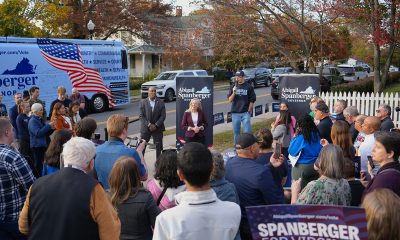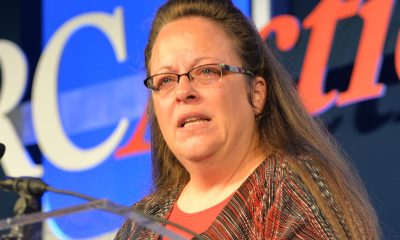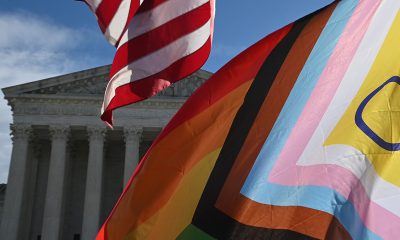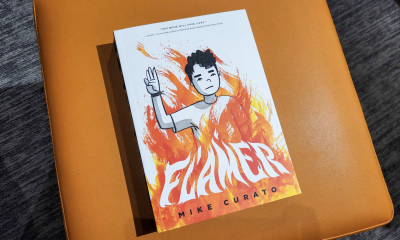Books
Two new books from longtime LGBTQ advocates not to miss
Besen on fight against conversion therapy; Basile revisits founding of HRC
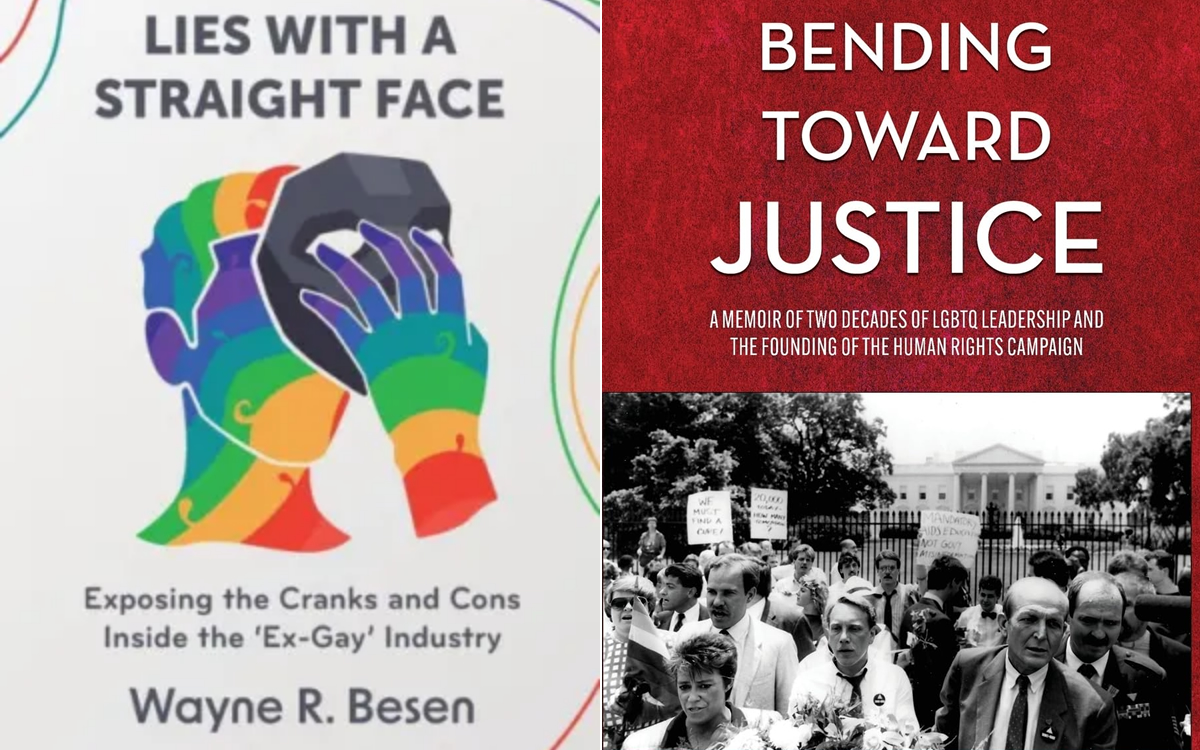
This fall brings two new important books from leading LGBTQ advocates, Wayne Besen, the leading figure in the fight against so-called ‘ex-gay’ therapy; and Vic Basile, a longtime LGBTQ rights and Democratic Party activist.
“Lies with a Straight Face: Exposing the Cranks and Cons Inside the ‘Ex-Gay’ Industry,” by Besen revisits the fight against conversion therapy.
“I wrote this book to ensure that future generations know the truth about how conversion practices damage mental health, break apart families, and never work,” Besen said in a statement. All royalties from book sales will go to Truth Wins Out, to help its efforts to fight the “ex-gay” industry. Book release date is National Coming Out Day, Oct. 11. Visit waynebesen.com for more information and for a link to pre-order.
Below is an excerpt from the book:
Weird Weekend: Journey into Manhood
Twenty-four-year-old Matt Ashcroft traveled from a small town in Ontario, Canada to the woods of New Hope, Pennsylvania to attend Journey into Manhood’s (JiM) weekend retreat. It was a 48-hour “ex-gay” camp experience, that was supposed to put him on the path to heterosexuality.
Not long after he provided his John Hancock for a non-sexual experience, Matt heard the words he’ll never forget. “Don’t mind me if I have a boner,” a 50-year old man who Matt says “smelled like cat pee” intoned. The older gentleman was assigned to be Matt’s cuddle partner. The idea was to serve as a surrogate father, offering love and affection through touch that dad supposedly withheld.
When the weekend commenced, lights were dimmed in a large room, creating an atmosphere of mystery and foreboding. The campers were disoriented, with their personal items having been taken from them immediately upon arrival.
“We didn’t even have watches,” Matt explained. “We didn’t have cell phones. We had to rely on the sun to tell time. We had no sense of time. We just followed direction from the leaders that were there.”
Most of those who signed up came from stern religious communities where they had very limited access to out gay men. Far away from home, they suddenly found themselves in the forest, surrounded by similar guys with raging hormones. The pent up, closeted sexual energy, whether acted upon or not, was palpable, and lay beneath the surface.
Matt nervously peered at his malodorous cuddle partner. They were instructed to attempt the “motorcycle position”. The much older stranger would sit behind Matt and hold him, as if they were riding a Harley down the highway.
Awkwardly, the guys crouched into position. Matt squirmed and tried not to breathe, though his partner’s stale cat urine aroma gently wafted into his traumatized nostril. He could feel the mature stranger’s member inflating like a birthday balloon, poking and prodding into his backside.
What kind of “straight camp” was this? Matt thought.
Abba Dabba Doo
Arthur Abba Goldberg was out of prison and out of luck. The disbarred attorney and former Wall Street conman groped to discover the next chapter in his sordid life. He was forbidden from practicing law and banished from the financial industry, so it was unclear how he would make a living. Suddenly, like a revelation from God, it was all too obvious.
His son had come out as gay, so Goldberg would opportunistically capitalize on his family’s situation to cash in. He recruited Elaine Berk, who also had a gay son, to pose together as “experts” who could cure homosexuality. In 1999, they started Jews Offering New Alternatives to Homosexuality (JONAH), in Jersey City, as the vehicle for their scam.
To add a whiff of legitimacy, Goldberg authored, Light in the Closet: Torah, Homosexuality, and the Power to Change, which mostly cribbed NARTH’s fringe ideas and debunked theories. Additionally, Goldberg became the Executive Secretary of NARTH and President of Positive Alternatives to Homosexuality (PATH), a coalition of “ex-gay” groups promoting “non-gay alternatives to homosexual lifestyles.”
In terms of viability, there was pent up demand in the Orthodox Jewish Community for JONAH’s product. The already existing “pray away the gay” programs were geared towards Christians, offering Jesus as the answer. With an increase in the number of LGBTQ Orthodox Jews coming out every day, flummoxed family members and rabbis searched for answers on how to deal with this “abomination.” Goldberg and Berk would happily fill the vacuum, unethically profiting from other peoples’ confusion and pain.
There was one sticky problem that could potentially derail the whole scam. The name Arthur Abba Goldberg was unique. An online search would immediately reveal that he was a criminal mastermind who had done hard time for heinous crimes. The answer to his existential dilemma was simpler than one might imagine. He simply dropped the “Abba” from his name, and became one of the seemingly countless men named Arthur Goldberg, rendering himself virtually unsearchable. With a new identity and innovative swindle, Goldberg, along with Berk, put out a shingle. The legendary conman was back in business.
The ‘Ex-Gay’ Heyday
The discoveries could be startling. Dan Scobey would stumble upon relics from his fiancé Randy Thomas’ disturbing past. The man he loved deeply, and affectionally held hands with during our interview, had not too long ago been the chief lobbyist and former Vice President of Exodus International.
“You know what’s fun,” Scobey told me? “When you move in with someone and you start making your own space, and you start putting some of their things away to make room for your things. You come across framed pictures of your partner in a tuxedo, and your like, ‘that guy he’s with looks so familiar. Oh my God, that’s Karl Rove. [George W. Bush’s political guru] That, goes in the bottom of the closet!’” Scobey joked.
Today, Randy Thomas (now Scobey) embodies the titanic failure of the world’s largest “ex-gay” ministry. At its peak in 2012, Exodus International had 251 member agencies. Its lobbyists strategized with the most powerful political leaders in the land. Exodus was part of the secretive Arlington Group, which was comprised of America’s most influential social conservatives. This included former Indiana Governor and eventual Vice President Mike Pence and Donald Trump’s future political strategist Kellyanne Conway. Exodus was also a member of the DC Group, the Religious Right’s B-Team, consisting of hardcore anti-gay zealots, such as Peter LaBarbera and Robert Knight.
In 2006, the “ex-gay” industry reached its apex. Then-President George W. Bush hosted Randy Thomas and Exodus President Alan Chambers at the White House. Their role was to trumpet their “ex-gay” identity in support of Bush’s campaign to pass the odious Federal Marriage Amendment. This unsuccessful effort attempted to change the United States Constitution to ban same-sex marriage nationwide. Thomas now looks back at this epoch in his life with profound shame and regret.
“At the time, I was so proud. I was like, ‘Momma, I’m going to the White House.’ Now I look back on it, I’m like, ‘Why didn’t you yell out? Why did you betray your community like that?’ And it’s a hard thing to think about. But I’m glad that the blinders have been ripped off, and I now, of course, support full marriage equality, and I’m going to marry a dude.”
Vic Basile revisits lifetime of advocacy
Another important book debuting this fall is “Bending Toward Justice,” by Vic Basile, the Human Rights Campaign’s first executive director and co-founder of the Victory Fund.
“Bending Toward Justice” shares the history of HRC and the journey through AIDS, the attempts to get government recognition and funding for research, education, and treatment, and how HRC confronted ignorance and discrimination to shift the hearts and minds of Americans about equal treatment, according to a statement from the publisher.
“Drawing on his experience as the first executive director of the Human Rights Campaign Fund, Vic Basile has written a valuable addition to the story of one of the most consequential movements in post-World War II America,” said former gay Rep. Barney Frank (D-Mass.). The book was released this week and is available at HRC.org and Amazon. An excerpt follows:
Of Historic Significance
It was a historic moment for the fifteen hundred elegantly dressed people in Washington, D.C.’s Grand Hyatt ballroom, just blocks from the White House.
“Ladies and gentlemen,” announced Elizabeth Birch for the Human Rights Campaign, “it is now my deep honor to present to you the president of the United States.”
The crowd rose to its feet in thunderous applause. Never before had a sitting president addressed an LGBTQ audience until that moment on November 8, 1997, when President Bill Clinton was the keynote speaker at the first Human Rights Campaign National Dinner.
Ellen DeGeneres and Anne Heche were in the audience with Betty DeGeneres, Dorothy Height, Wade Henderson, Ambassador James Hormel, and elected officials, labor and corporate executives, and countless LGBTQ leaders from across the country. C-SPAN cameras ran live coverage, enabling many thousands around the country to share the historic occasion.
Although impossible to document, it seemed as though there were more reporters and cameras in the room than had ever covered an LGBTQ event before.
The historic significance of the president’s appearance that night was clear to everyone. No one could deny how far the movement had come since Stonewall. But everyone knew how much further we still had to go and how truly dangerous it could be for us just to live our lives. If those listening to the president that night had been lucky enough to avoid being gay-bashed, a quick scan of the local gay papers too often told of others who hadn’t been so fortunate. Just eleven months later, there would be no escaping the horrific description of Matthew Shepard tied to a fence and left to die in a Wyoming field.
Every person in that ballroom lived with this reality, but the older attendees knew firsthand how truly terrifying it could be to be gay during the McCarthy era’s “lavender scare.” They remembered the 1950 congressional hearings on the “Employment of Homosexuals and Other Sex Perverts” that categorized them as national security threats and described them as perverts and child molesters. They remembered when President Dwight Eisenhower issued an executive order that banned “homosexuals” from the military and civilian federal employment. They recalled the horrifying witch hunts that publicly exposed and humiliated many thousands of federal employees. Not only did many lose their careers, but many lost their families as well. Too many died by suicide.
Those older attendees likely saw the horrifying 1967 CBS documentary anchored by revered journalist Mike Wallace called “CBS Reports: The Homosexuals.”
“Most Americans are repelled by the mere notion of homosexuality,” Wallace reported. “The CBS news survey shows that two out of three Americans look upon homosexuals with disgust, discomfort, or fear. One out of ten says hatred. A vast majority believe that homosexuality is an illness; only ten percent say it is a crime. And yet, and here’s the paradox. The majority of Americans favor legal punishment, even for homosexual acts performed in private between consenting adults….
“The homosexual bitterly aware of his rejection responds by going underground. The average homosexual, if there be such is promiscuous—his sex life, his love life consists of a series of chance encounters at the clubs and bars he inhabits.”
The animus and discrimination against gay people were not confined to the federal government. Many state and local governments did the same. Florida was especially aggressive, using its notoriously cruel Johns Committee to expose and drive gay teachers, professors, and students from their jobs and academic pursuits at the state’s public universities.
During that time and well beyond it, police routinely raided gay bars, arresting patrons and releasing their names to the media. During one of these raids at the Stonewall Inn in New York’s Greenwich Village in June 1969, the patrons, some who were transgender, fought back in an uprising that would last for three days and mark the beginning of the modern-day LGBTQ rights movement.
That history, filled with richness and brutality, inspired the establishment of what is now the largest and most influential organization supporting LGBTQ rights in the country. I was the first executive director of that organization, taking it in six years from ambitious and almost viable to becoming the twenty-fourth largest of some five thousand political action committees in the United States. I led the organization’s massive lobbying effort to pass legislation mandating federal policy for fighting AIDS, we gave to more than a hundred friendly campaigns and committees, and we initiated several high-pressure actions in response to anti-gay legislation. For better or worse, politics in this country responds to money, and politicians learned they needed to respond to our community and our legislative agenda.
HRC’s growth and influence has multiplied with each succeeding leader. Today the Human Rights Campaign has some three and a half million members and supporters, some one hundred seventy-five people on staff, a building worth more than $50 million, and a budget of almost $70 million. Seven leaders have propelled the organization to its present stature.
HRC lobbies the federal, state, and municipal governments on LGBTQ legislative and regulatory matters, advocates before the courts, participates in judicial and executive branch nominations process, leads and actively works on national civil rights coalitions, educates the public, participates in elections, and works at the grassroots level on civil rights and political matters of national, state, and municipal importance.
But virtually no one remembers the handful of courageous individuals who started a small organization in 1980 to help bend that moral arc toward justice for their community. A few are still here. Many—too many—died of AIDS. All of them should be remembered, and no one more than Steve Endean, the young man who started what is now called the Human Rights Campaign with little money and a whole lot of grit.
Books
New book highlights long history of LGBTQ oppression
‘Queer Enlightenments’ a reminder that inequality is nothing new
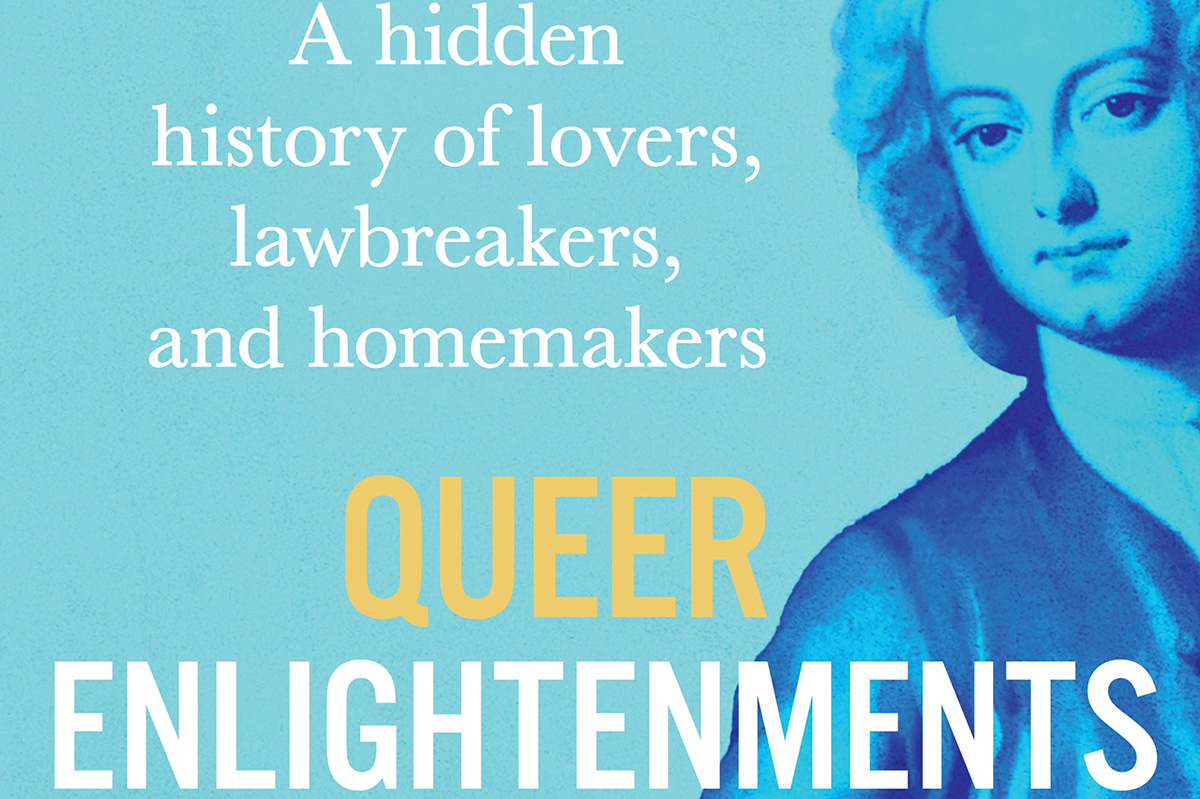
‘Queer Enlightenments: A Hidden History of Lovers, Lawbreakers, and Homemakers’
By Anthony Delaney
c.2025, Atlantic Monthly Press
$30/352 pages
It had to start somewhere.
The discrimination, the persecution, the inequality, it had a launching point. Can you put your finger on that date? Was it DADT, the 1950s scare, the Kinsey report? Certainly not Stonewall, or the Marriage Act, so where did it come from? In “Queer Enlightenments: A Hidden History of Lovers, Lawbreakers, and Homemakers” by Anthony Delaney, the story of queer oppression goes back so much farther.

The first recorded instance of the word “homosexual” arrived loudly in the spring of 1868: Hungarian journalist Károly Mária Kerthbeny wrote a letter to German activist Karl Heinrich Ulrichs referring to “same-sex-attracted men” with that new term. Many people believe that this was the “invention” of homosexuality, but Delaney begs to differ.
“Queer histories run much deeper than this…” he says.
Take, for instance, the delightfully named Mrs. Clap, who ran a “House” in London in which men often met other men for “marriage.” On a February night in 1726, Mrs. Clap’s House was raided and 40 men were taken to jail, where they were put in filthy, dank confines until the courts could get to them. One of the men was ultimately hanged for the crime of sodomy. Mrs. Clap was pilloried, and then disappeared from history.
William Pulteney had a duel with John, Lord Hervey, over insults flung at the latter man. The truth: Hervey was, in fact, openly a “sodomite.” He and his companion, Ste Fox had even set up a home together.
Adopting your lover was common in 18th century London, in order to make him a legal heir. In about 1769, rumors spread that the lovely female spy, the Chevalier d’Éon, was actually Charles d’Éon de Beaumont, a man who had been dressing in feminine attire for much longer than his espionage career. Anne Lister’s masculine demeanor often left her an “outcast.” And as George Wilson brought his bride to North American in 1821, he confessed to loving men, thus becoming North America’s first official “female husband.”
Sometimes, history can be quite dry. So can author Anthony Delaney’s wit. Together, though, they work well inside “Queer Enlightenments.”
Undoubtedly, you well know that inequality and persecution aren’t new things – which Delaney underscores here – and queer ancestors faced them head-on, just as people do today. The twist, in this often-chilling narrative, is that punishments levied on 18th- and 19th-century queer folk was harsher and Delaney doesn’t soften those accounts for readers. Read this book, and you’re platform-side at a hanging, in jail with an ally, at a duel with a complicated basis, embedded in a King’s court, and on a ship with a man whose new wife generously ignored his secret. Most of these tales are set in Great Britain and Europe, but North America features some, and Delaney wraps up thing nicely for today’s relevance.
While there’s some amusing side-eyeing in this book, “Queer Enlightenments” is a bit on the heavy side, so give yourself time with it. Pick it up, though, and you’ll love it til the end.
The Blade may receive commissions from qualifying purchases made via this post.
Books
A history of lesbian workarounds to build family
Fighting for the right to have and raise kids
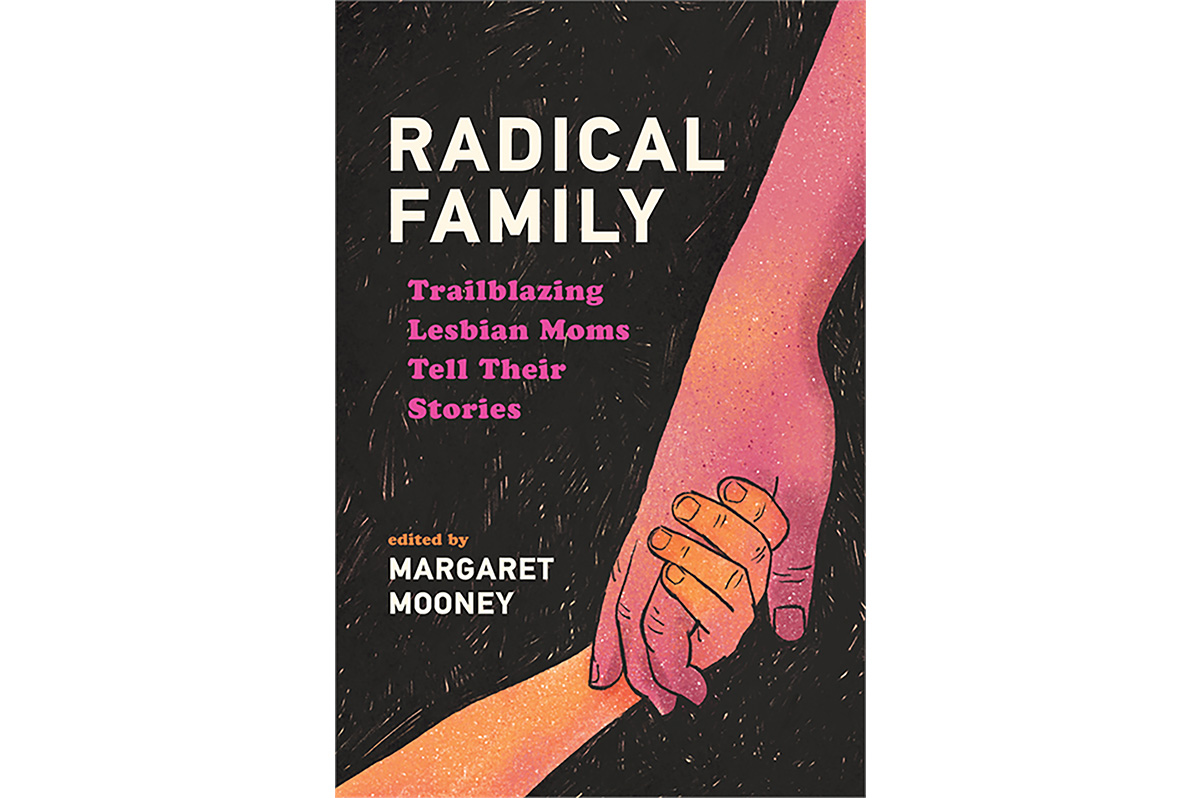
‘Radical Family: Trailblazing Lesbian Moms Tell Their Stories’
Edited by Margaret Mooney
c.2025, Wisconsin Historical Society Press
$20/150 pages
You don’t have a white picket fence with an adorable gate.
The other parts of the American Dream – the house in the suburbs, a minivan, and a big backyard – may also be beyond your reach. You’ve never wanted the joyous husband-wife union, but the two-point-five kids? Yeah, maybe that’s possible. As in the new book “Radical Family,” edited by Margaret Mooney, it’s surely more so than it was in the past.

Once upon a time, if a lesbian wanted to raise a family, she had two basic options: pregnancy or adoption. That is, says Mooney, if she was willing to buck a hetero-centric society that said the former was “selfish, unnatural and radical” and the latter was often just simply not possible or even legal.
Undaunted, and very much wanting kids, many lesbians ignored the rules. They built “chains” of women who handed off sperm from donor to doctor to potential mother. They demanded that fertility clinics allow single women as customers. They wrote pamphlets and publications aimed to help others become pregnant by themselves or with partners. They carefully sought lesbian-friendly obstetricians and nurses.
Over time, lesbians who wanted kids were “emboldened by the feminist movement and the gay and lesbian rights movement” and did what they had to do, omitted facts when needed, traveled abroad when they could, and found workarounds to build a family.
This book tells nine stories of everyday lesbians who succeeded.
Denise Matyka and Margaret McMurray went to Russia to adopt. Martha Dixon Popp and Alix Olson raised their family, in part and for awhile in conjunction with Popp’s husband. Gail Hirn learned from an agriculture publication how to inseminate herself. MC Reisdorf literally stood on her head to get pregnant. Mooney says that, like most lesbian parents then, she became a mother “without any safety nets…”
Such “struggles likely will feel familiar as you read about [the] desire to become parents…” says Mooney. “In short, these families are ordinary and extraordinary all at once.”
In her introduction, editor Margaret Mooney points out that the stories in this book generally take place in the latter part of the last century, but that their relevance is in the struggles that could happen tomorrow. There’s urgency in those words, absolutely, and they’re tinged with fear, but don’t let them keep you from “Radical Family.”
What you’ll see inside these nine tales is mostly happy, mostly triumphant – and mostly Wisconsin-centric, though the variety in dream-fulfillment is wide enough that the book is appropriate anywhere. The determination leaps out of the pages here, and the storytellers don’t hide their struggles, not with former partners, bureaucracy, or with roadblocks. Reading this book is like attending a conference and hearing attendees tell their tales. Bonus: photos and advice for any lesbian thinking of parenthood, single or partnered.
If you’re in search of positive stories from lesbian mothers and the wall-busting they did, or if you’ve lived the same tales, this slim book is a joy to read. For you, “Radical Family” may open some gates.
The Blade may receive commissions from qualifying purchases made via this post.
Books
Florida’s war on Black, queer lives hidden no more
New book ‘American Scare’ exposes truth of decades of erasure, attacks
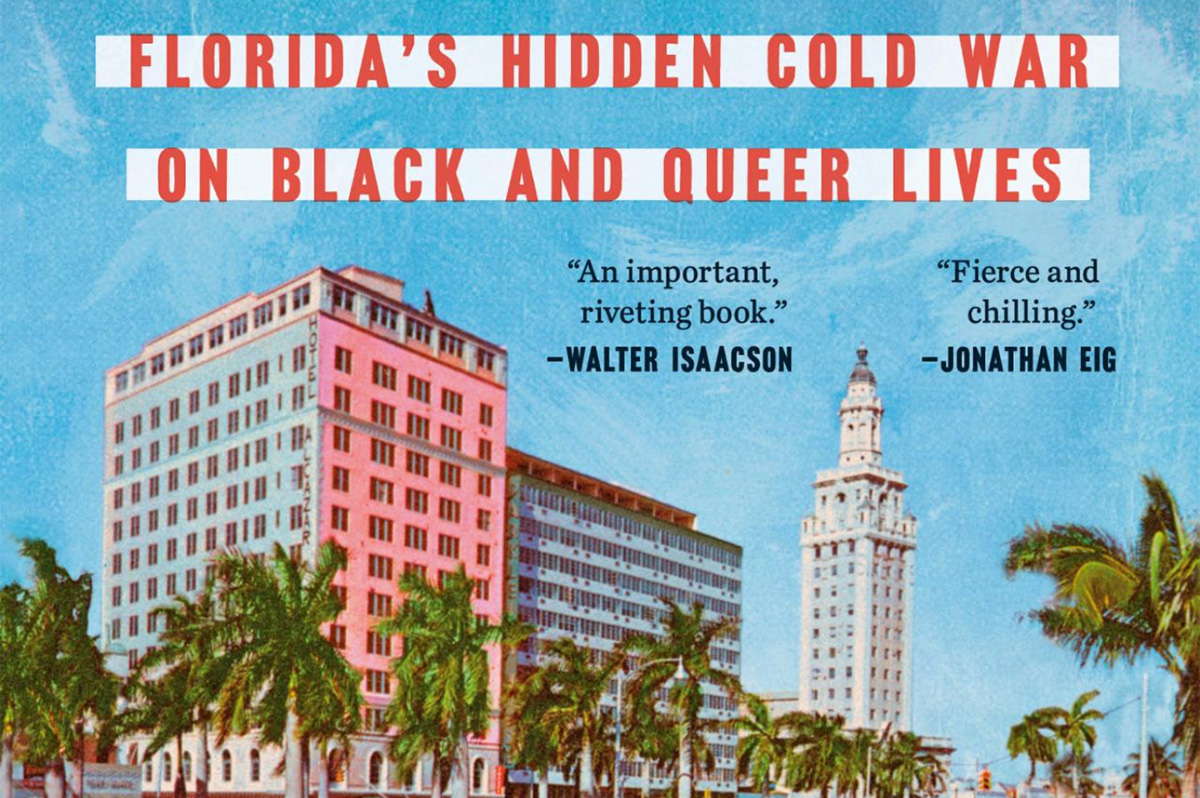
‘American Scare: Florida’s Hidden Cold War on Black and Queer Lives’
By Robert W. Fieseler
“What’s with Florida?,” Bobby Fieseler, disgusted, asked after completing his initial research into the vicious investigation of suspected homosexual teachers by the Florida Legislative Investigation Committee (FLIC) in the 1950s. How did the official animus toward all things queer happen in Florida, Fieseler pitched his publisher. We can be grateful Dutton gave him the green light for “American Scare, Florida’s Hidden Cold War on Black and Queer Lives.”

Fieseler’s book is a masterpiece of archive activism that begins in a rental van escaping Florida with some 20 boxes of historical documents meant to be seen by no one. The cartons contained a secret second copy of materials that had been held back from the jaws of the Florida State Archives in Tallahassee. Soon, more folders would surface with unredacted materials. “There are friends of Dorothy in any system,” he explains his archival detective work with a wink.
What’s with Florida? In the 1950s, it was all about legislators exposing politically helpless homosexuals to justify the committee’s investigations and budgets. The FLIC documents reveal the names of the accused “perverts,” the cops who raided the restrooms, the terrified queer informants and the professional interview techniques that would extract confessions from the victims. On another level, this was about old-school Southern racists determined to stop integration at all costs with intention to weave lies about Communist infiltration of the NAACP. Finally, Fieseler encountered first-hand an official determination to erase and lock-up this history. The statewide obsession with erasing history continues to this day. The Florida Department of Transportation this year painted over the community rainbow crosswalk memorial to the Pulse nightclub massacre victims in Orlando.
“American Scare” is such a fully documented investigation of what unfolded, it will be impossible to paint over the magnitude of this assault. The book bears witness in gory detail to the ruination of private people that exceeds in pure perniciousness the more famous “Lavender Scare.” Although the “Lavender Scare” purged many more individuals, it was about the U.S. Department of State firing public officials slimed as “pinstripe twerps.” The Florida investigations were a statewide purge using a dark politics of exposure of schoolteachers leading private lives. Fieseler quotes Remus Strickland, the head homo-hunter and executive director of the Southern Association of Intelligence Agents formed in response to the Supreme Court’s Brown v. Board of Education desegregation decision (1954), “If the Committee’s first pursuit (race and Communism) was a mandate, its second pursuit (homosexuals) was an opportunity.” Remus (that’s really this Southerner’s name) explained years later without remorse, “We first looked at the University of Florida for Communists….then we came back and did the homosexual purge.” Fieseler’s archival research reveals how far-right politicians and investigators like Strickland characterized Communists, African Americans (through the NAACP) and homosexuals as aligned “treasonously in a subversive societal infestation.”
The whole show was the creation of a wily, populist politician — a Florida “Pork Chopper” — Charley Johns, president of the Florida Senate. “Pork Choppers,” the rural, white Northern Florida wing of the old Democratic Party, controlled the state legislature from the 1930s to the 1960s. They were strongly opposed to integration, Communists, homosexuals, reapportionment and government reform. Johns owned the Charley E. Johns Insurance Agency, which insured state agencies. Fieseler’s history brings these North Florida politicians into grotesque focus. Their “power had lynched history,” he writes about his passion to excavate how they sealed and redacted the records so they would never face responsibility for their actions.
“American Scare” reveals how these Pork Choppers were willing to crush homosexuals as an instrument to maintain power. Their victims were isolated gay and lesbian teachers who could only plead for mercy, vanish or inform on one another. They were entrapped by the system itself. Fieseler tells the story of how Remus Strickland pulled Miss Poston, a physical education teacher out of her classroom surprising her with a tape recorder and a request to give a misdirecting statement about the prevention of child molestation. Suddenly Remus changed the subject: “Miss Poston, in your acts with Miss Bradshaw whom you referred to on this record, would she play the part of the aggressor…..She was known as the butch is that true?….Was there any occasion of any oral copulation?” He closed in for the kill, “Could there have been more than one time”? Miss Poston caved, “Possibly but if so only one more time.” The reel-to-reel tape is turning.
Concert pianist and music teacher William James Neal received the same taped grilling. Remus begins the interview, “You’re an educated Nigra,” confronting Neal with testimony he was a homosexual “nigra.” Years later, Neal remembered, “He told me I would never teach within the continental limits of the United States. He said he had proof I was a homosexual.” An African-American concert pianist, Neal had extensively toured the U.S. playing with major orchestras and hosting his own radio program in Florida. Neal had the self-respect and courage to take his illegal termination to the Florida Supreme Court. In 1962, the court ruled in his favor (Neal v. Bryant) handing Remus Strickland a devastating defeat, writing “The statements accused teachers allegedly made were obviously extracted under a threat of publicity.” Vindicated, William Neal nonetheless left Florida never to return.
There have been resolutions for an acknowledgment and apology. None have advanced through the Republican-controlled legislature occupied with a slew of “Don’t Say Gay” bills. “American Scare’ is larger than a small-bore history of investigations. It is the story of a Great Florida Teacher’s Purge launched to stop integration. Fieseler is done with redactions. He names names. If there is anything redemptive in this Southern hot mess, it is this: Bobby Fieseler, a queer historian, rescued the boxes and delivers readers their contents with history’s gale force.
The Blade may receive commissions from qualifying purchases made via this post.

